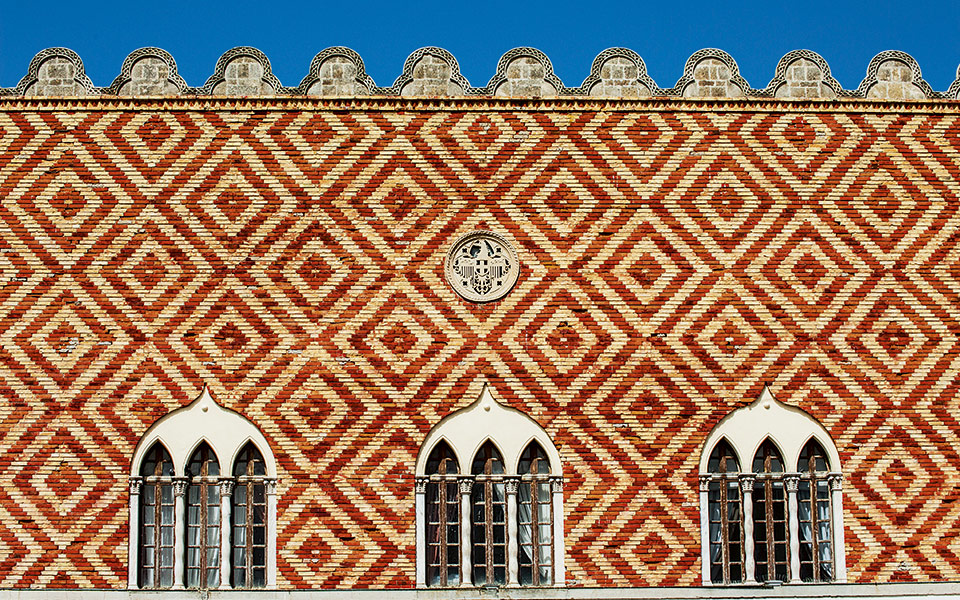What would Rhodes be like today without those architectural works from the era of the Italian occupation (1912-1943)? In all likelihood, it would be less striking and less picturesque. The town’s noted buildings, so important today, might not have been preserved or renovated, instead perhaps succumbing years ago to the deterioration of time. Visitors would not gather, as they do today, to take in the impressive seafront spectacle of the Foro Italico at the port of Mandraki, with all the imposing administrative buildings that combine Byzantine, Venetian, Renaissance, Ottoman and local architectural elements in a distinctively eclectic style.
And the Old Town – already having undergone Ottoman interventions, including the installation of cemeteries around its walls – might simply have been allowed to collapse, palace and all; or it might have suffered that common Greek fate of being abandoned to unfettered and unregulated redevelopment, like so many other once beautiful places.
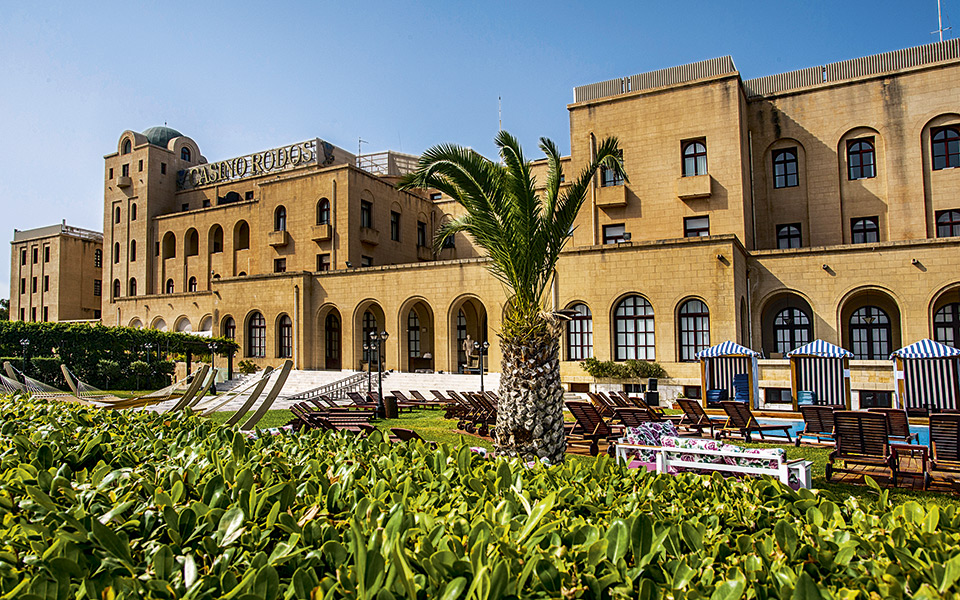
© Clairy Moustafellou
Such contemplation, of course, does not absolve the Italian conquerors of Rhodes, nor does it negate the hard, authoritarian methods of “Italianization” they applied in the Dodecanese, especially after the rise of fascism. It simply recognizes the immense importance of the architectural character and sense of spatial order they left stamped on the contemporary face of Rhodes.
Although the Italians landed on the island in 1912 during their conflict with the Ottoman Empire, most of their architectural works on Rhodes were carried out during the era of Mussolini (who took power a decade later) and reflect the attitude of his fascist regime toward urban space. The past – the ancient past as much as the Middle Ages and the Renaissance – became raw material for fascist rhetoric, as Dr. Medina Lasansky points out in her book “The Renaissance Perfected: Architecture, Spectacle & Tourism in Fascist Italy.”
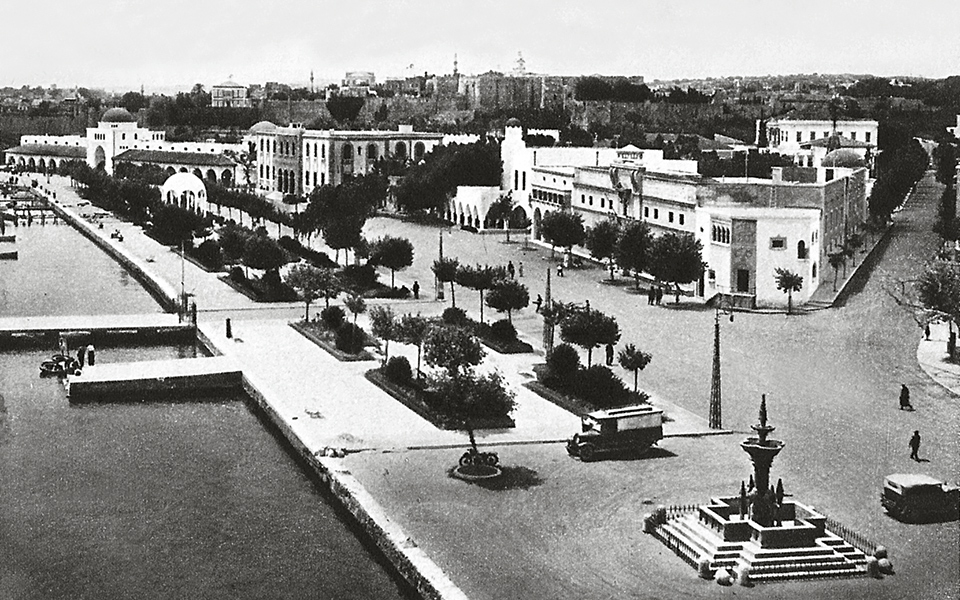
© Alekos Markoglou Archive
In the 1920s and 30s many leading architects, archaeologists, historians and city planners of Rome collaborated to showcase ancient monuments and historic sites of the former Roman Empire in the light of the Duce’s vision of modern Italy as a metropolitan power center.
Public spaces, commercial facilities, churches, theaters, bridges, schools, sports facilities, villages and entire cities were either built or restored in Italy, as well as in the Italian territories in the Aegean and northern and eastern Africa. The central motif for this extensive building program was antiquity, both on a theoretical and practical level, and its apparent aim was the promotion of fascism.
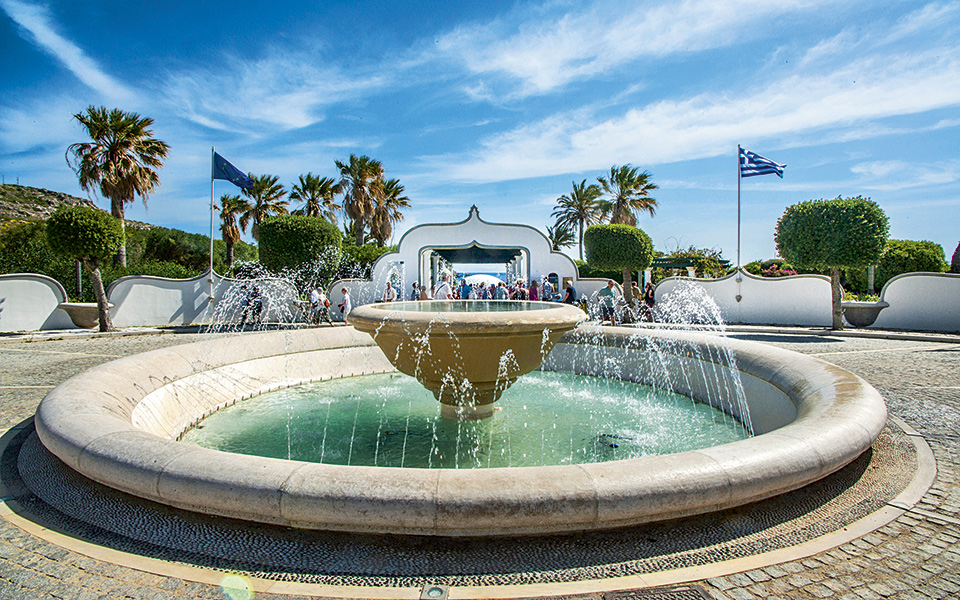
© Clairy Moustafellou
In the beginning, the Rhodians regarded the Italians as liberators from the Ottoman yoke and saw their arrival as a harbinger of the island’s desired union with Greece. These hopes were quickly dashed. Rhodes’ new overlords put the Dodecanese Islands under the authority of Italy’s Ministry of Foreign Affairs, calling themselves the “Governo dele Isole Italiane Dell Egeo,” or the Government of the Italian Islands of the Aegean.
In aspiring to gain control over the Eastern Mediterranean, they began a broad program of Italianization of the region and its inhabitants. These aims were served by a series of appointed governors, who applied either a “carrot” or a “stick” policy.
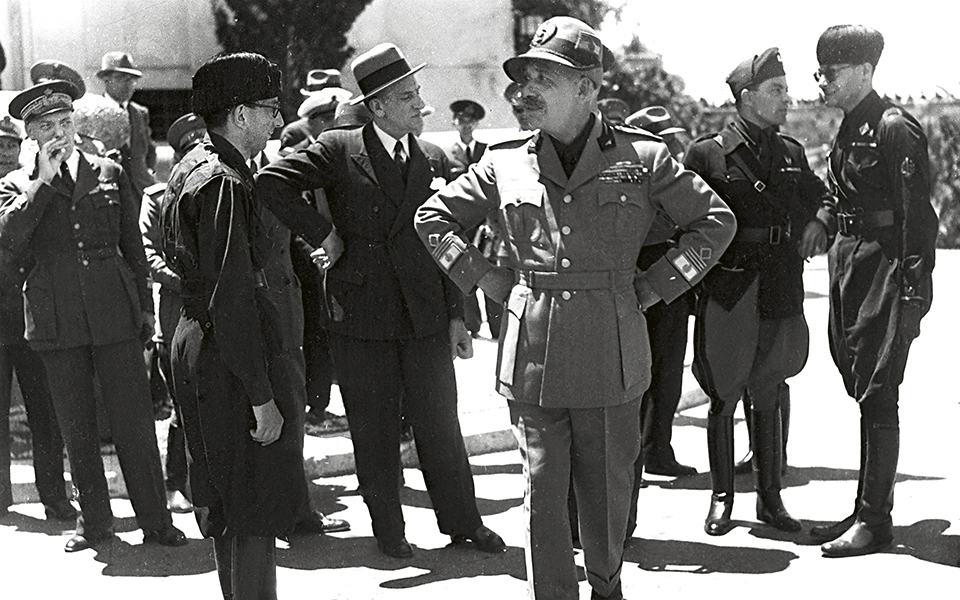
© Alekos Markoglou Archive
The aesthetics of this movement were not uniform, as the ruling Italians appointed to their ranks and glorified, on a case by case basis, ultra-modernists, rationalists, neo-historians and representatives of the Novecento. However, the main thrust of everyone involved was the “cleansing” (or “liberation,” as they called it) of the past.
Thus, the restoration and/or reconstruction of the traces of the Middle Ages and the Renaissance included their redesign – their selective representation carried out according to a specific viewpoint, one that fit the regime and its values. Whether in Rome, Tuscany, Rhodes or Libya, the regime’s architects were summoned to create a “purified” version of the past that would extol the present.

© Perikles Merakos
The first civilian governor of the Italian Islands of the Aegean, and the one who left the most lasting impression on Rhodes, was the diplomat Mario Lago (1924-1936), who led his country’s efforts to impose Italian culture and to alter the ethnic make-up of the local population, while simultaneously attempting to banish the Greek language, culture and Orthodox religion.
Lago erected many public buildings; undertook numerous beautification projects in Rhodes’ historical center; restored medieval monuments; founded rural settlements; and adopted economic reforms – including measures to promote tourism. He was a pioneer in his time. Perhaps his most important legacy is the master plan he instituted for the city of Rhodes, which was comparable to those adopted in all the major cities of the West.
During Lago’s tenure, the monuments of the Old Town were identified and protected; all the land in the immediate area around the city walls was declared a “zona monumentale” (monument zone) and construction came under tight controls. Large areas (e.g., the Ottoman cemeteries) were forcibly seized for reasons of public interest, while the new town established outside the walls followed the popular Italian model of the garden city, endowed with a modern infrastructure, including roads, water and sewer systems, street lighting and administrative and military buildings.
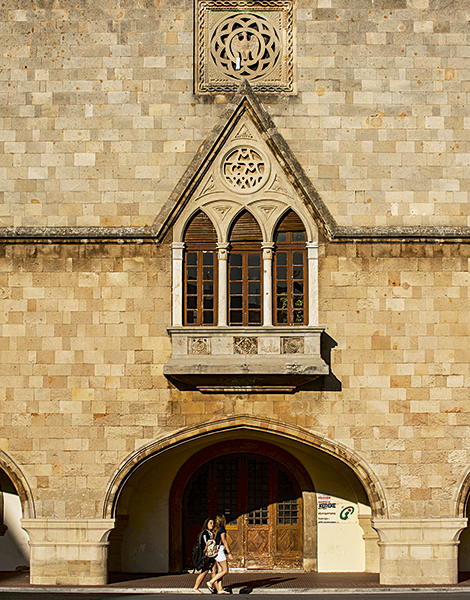
© Clairy Moustafellou
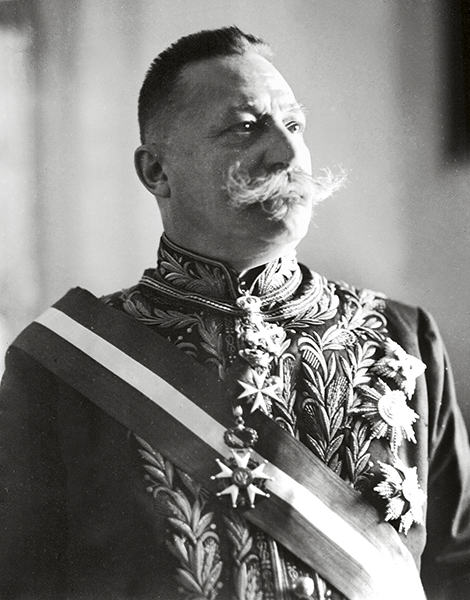
© Alekos Markoglou Archive
Most of the projects completed during this period bear the stamp of Florestano di Fausto (1890-1965), the most important architect of fascist Italy. In the space of three years (1923-1926), and before he suffered a rift with Governor Lago, Di Fausto had designed or redesigned an astonishing fifty buildings in the Dodecanese – houses, public buildings, churches, markets, schools, barracks – of which thirty-two had been completed or were under construction in 1927.
Among the achievements that can still be admired today are the Foro Italico, the city’s new administrative center at Mandraki and the Italian (formerly Ottoman) Club, a lounge for Italian officers and senior civil servants. The Courthouse was restored in a style clearly influenced by Renaissance architecture. The Roman Catholic Cathedral of Saint John (known today as the Metropolitan Church of the Annunciation), with its characteristic bell tower and its famed sarcophagi of the Great Magistrates, was built in the New Town as a replica of an older, Hospitallers-era church destroyed in 1856.
Other buildings include the Maritime Administration and the Grand Hotel of the Roses, with its distinctive dome, which continues to operate as a hotel and which constitutes one of the major landmarks of touristic Rhodes. Equally important was the Italians’ conservation work in the Old Town, especially their intervention at the Palace of the Grand Master of the Knights of Rhodes, which they restored and turned into a museum (it remains one today).
Notable, too, are the archaeological surveys, excavations and restoration works carried out by the Italians at several sites in Rhodes, mainly at Ialysos and Lindos, and elsewhere in the Dodecanese Islands.
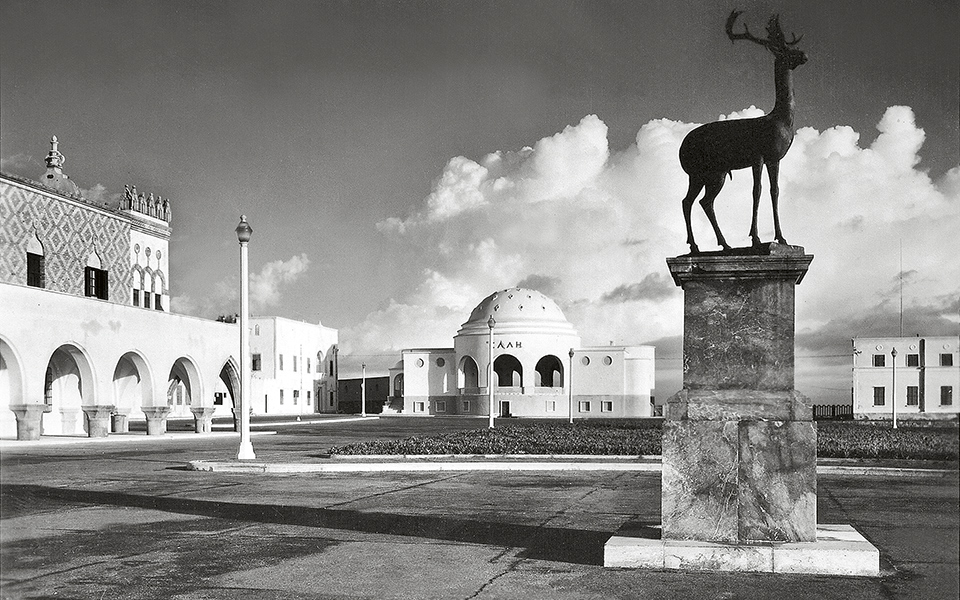
© Nikolas Stournaras/Simeon Dontas Archive
Lago was succeeded by Cesare Maria De Vecchi (1936-1940), one of the Quadrumvirs in Mussolini’s central ruling tetrarchy. He imposed unequivocally brutal political oppression, particularly as the Second World War and the Greco-Italian War approached.
Wanting to further emphasize the “glory” of the Knights and their presence in Rhodes, and by association to extend that glory to the regime of which he was a founding member, De Vecchi had public buildings and new constructions cladded with “pietra finta” (faux stone), as a visual reference to the period of the Knights. Characteristic examples of this treatment include the Hotel Thermae and the Palazzo Littorio, which later became the City Hall.
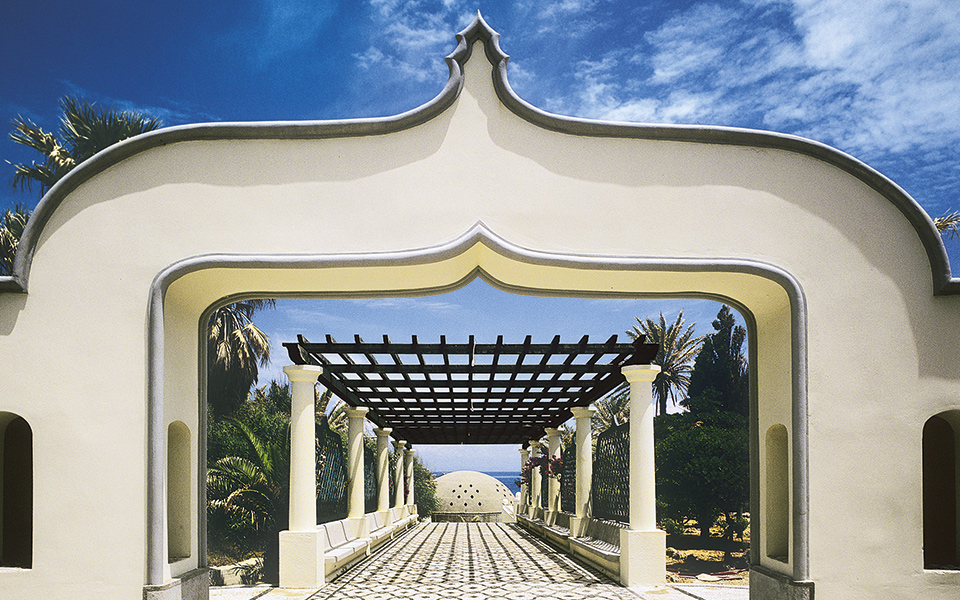
© Nikos Kasseris
On March 7, 1948, the inhabitants of Rhodes celebrated the incorporation of the Dodecanese Islands into the Greek State – in front of public buildings that were founded during the period of Italian occupation.
Freedom replaced fascist oppression. Seven decades later, there are few residents remaining on the island who experienced the Italian occupation, but the younger generations – without forgetting the past – live with, and take full advantage of, the legacy of architecture and urban planning from those years. It is a heritage that enriches their daily lives.

